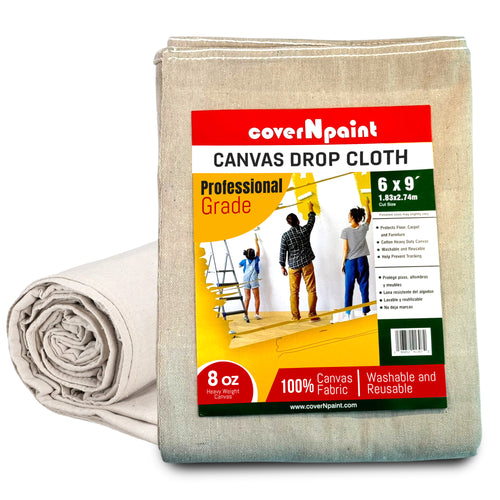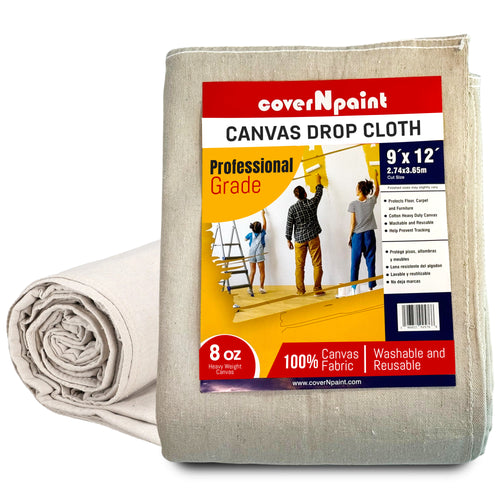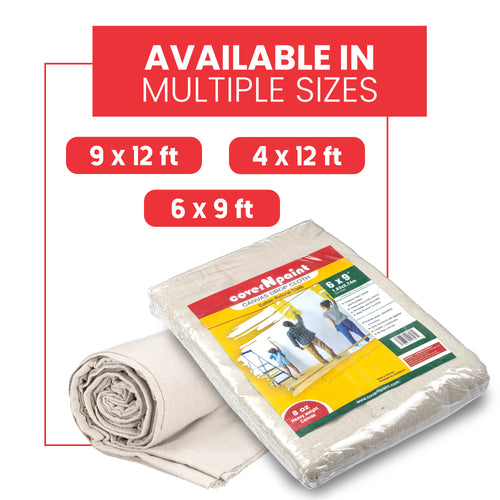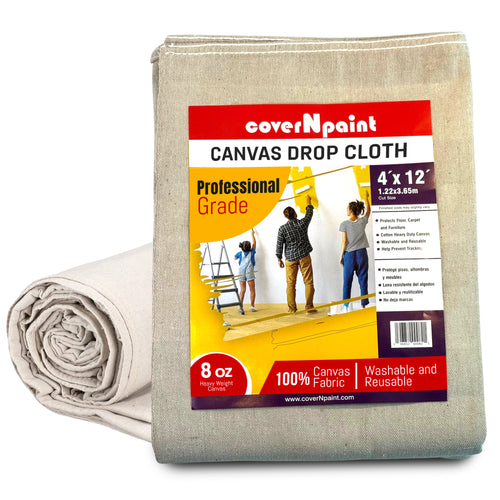When it comes to painting professionally or even taking on a weekend DIY project, paint tarps and painters drop cloths are the unsung heroes. They protect your floors, furniture, and outdoor spaces from accidental drips and spills — yet, they are often neglected once the paint job is done.
Taking care of your paint tarps, canvas drop cloths, and paint drop cloths not only extends their life but also saves money and reduces waste. Professional painters know this well — their gear lasts for years, not months, simply because of proper care and smart handling.
This guide shares expert-level tips from professional painters on how to maximize the lifespan of your paint tarps while maintaining safety, efficiency, and professional standards.
Understanding The Role Of Paint Tarps In Professional Painting
Before diving into maintenance tips, it’s crucial to understand the role paint tarps play in a project. Whether you use canvas drop cloths or plastic paint tarps, their purpose is to create a barrier between paint and any surface that needs protection.
Professional painters rely on:
-
Canvas drop cloths for long-term use and absorbency.
-
Plastic paint tarps for temporary, waterproof coverage.
-
Hybrid drop cloths (canvas with poly backing) for dual protection.
Each material serves a different purpose, and understanding which one to use — and how to care for it — makes a big difference in extending its lifespan.
Step 1: Cleaning Paint Tarps Properly After Every Use
One of the most effective ways to prolong your tarp’s life is regular cleaning. Neglecting this step can cause dried paint, dust, and debris to damage the fabric or create unsafe conditions.
1. Shake And Pre-Clean
After finishing your project, take the tarp outdoors and shake off any dry paint chips or dirt. For thicker stains, scrape gently using a plastic putty knife — never use metal tools that might tear the fabric.
2. Wash According To Material
-
Canvas drop cloths: Machine wash in cold water on a gentle cycle with mild detergent. Avoid bleach or harsh chemicals that can weaken fibers.
-
Plastic paint tarps: Wipe them down with a damp cloth and mild soap. Let them air dry completely before folding.
3. Drying The Right Way
Air drying is key. Avoid dryers or direct sunlight for long periods as it can shrink or fade canvas drop cloths. Proper drying prevents mold and odor build-up.
Step 2: Storing Paint Tarps To Prevent Damage
Storage is often overlooked but is essential in maintaining the integrity of your drop cloths. Improper storage can lead to mildew, permanent creases, and deterioration.
1. Fold, Don’t Stuff
Fold your paint tarps neatly instead of crumpling them. Rolling works well for larger clothes to avoid deep creases.
2. Keep Them Dry
Store your drop cloths in a cool, dry space. Humidity can encourage mold growth, especially in canvas drop cloths.
3. Use Breathable Storage Bags
Avoid plastic containers that trap moisture. Instead, use fabric or mesh storage bags that allow airflow.
Step 3: Handling Tarps During Painting Projects
1. Secure Your Tarps Properly
A common mistake even seasoned painters make is leaving tarps loose, which can cause slips or wrinkles that trip workers. For a detailed guide on avoiding such hazards, refer to our related article:
Painters Drop Cloth Safety Guide: Preventing Slips, Trips, and Falls.
2. Avoid Overstretching Or Pulling
When covering large areas, don’t tug excessively on the tarp edges — this can stretch or tear the seams. Instead, layer two tarps slightly to cover more surface.
3. Designate Indoor And Outdoor Tarps
Separate the drop cloths you use indoors from those used outside. Outdoor tarps collect more dust and contaminants that could later transfer indoors.
Step 4: Repairing And Reusing Paint Tarps
Professional painters know the value of repairing before replacing.
1. Patch Small Tears
For canvas drop cloths, small rips can be sewn or patched using heavy-duty fabric tape. For plastic paint tarps, use waterproof adhesive patches.
2. Reinforce Corners And Edges
If your drop cloth’s corners or seams are showing wear, reinforce them with extra stitching or binding tape to extend their usability.
3. Repurpose Older Tarps
Old or stained tarps can still serve useful purposes — as outdoor covers, dust protectors, or even DIY project materials.
Step 5: Expert Maintenance Habits Used By Professionals
Professional painters develop habits that help them get the most out of every paint drop cloth. Here are a few insider techniques:
-
Label Each Tarp: Use tags or markers to label where each tarp is used (e.g., “Living Room” or “Outdoor Work”).
-
Rotate Usage: Use older tarps for rough jobs and newer ones for finish work to extend the lifespan evenly.
-
Regular Inspections: Check your tarps after every project for rips or paint buildup.
-
Keep A Cleaning Schedule: Consistency is key — wash or wipe tarps after every major use.
Step 6: Choosing The Right Tarp For The Job
The life of your tarp also depends on choosing the correct type for the task:
-
Canvas Drop Cloths: Ideal for heavy-duty painting, absorbing drips without leaking.
-
Plastic Paint Tarps: Perfect for waterproofing and single-use tasks.
-
Hybrid Tarps: Canvas backed with poly or vinyl provides the best of both worlds — reusable and spill-resistant.
When investing in quality, consider durability, thickness, and reusability — not just cost.
A Curiosity-Building Note
Most painters don’t realize how much longevity and performance they can get from a single tarp with the right care techniques. Small adjustments — like storing it dry, cleaning it correctly, and labeling usage — can easily double its lifespan. coverNpaint USA often emphasizes these habits in its expert painting community, where professionals share real-world results from proper tarp care. Even small refinements in your routine can make a big difference in both quality and cost savings.
Benefits Of Maximizing The Life Of Paint Tarps
-
Cost Efficiency: Reduces frequent replacement expenses.
-
Eco-Friendly Impact: Encourages reuse and waste reduction.
-
Professional Appearance: Clean, maintained tarps enhance your brand image.
-
Safety: Well-kept tarps reduce slip hazards and project delays.
FAQs
Q1: How often should I wash my paint tarps?
Clean canvas drop cloths after every major project. For plastic tarps, wipe them after each use.
Q2: Can I repair small tears on my drop cloths?
Yes. Use heavy-duty stitching for canvas and waterproof tape for plastic paint drop cloths.
Q3: What’s the best way to prevent mold in stored tarps?
Always dry tarps fully before storage and use breathable fabric bags.
Q4: Are paint tarps reusable for different types of paint?
Yes. Just make sure the tarp is clean and dry before switching from oil-based to water-based paints.
Q5: What’s the average lifespan of a canvas drop cloth?
With proper care, a canvas drop cloth can last several years — sometimes even longer for professionals.













